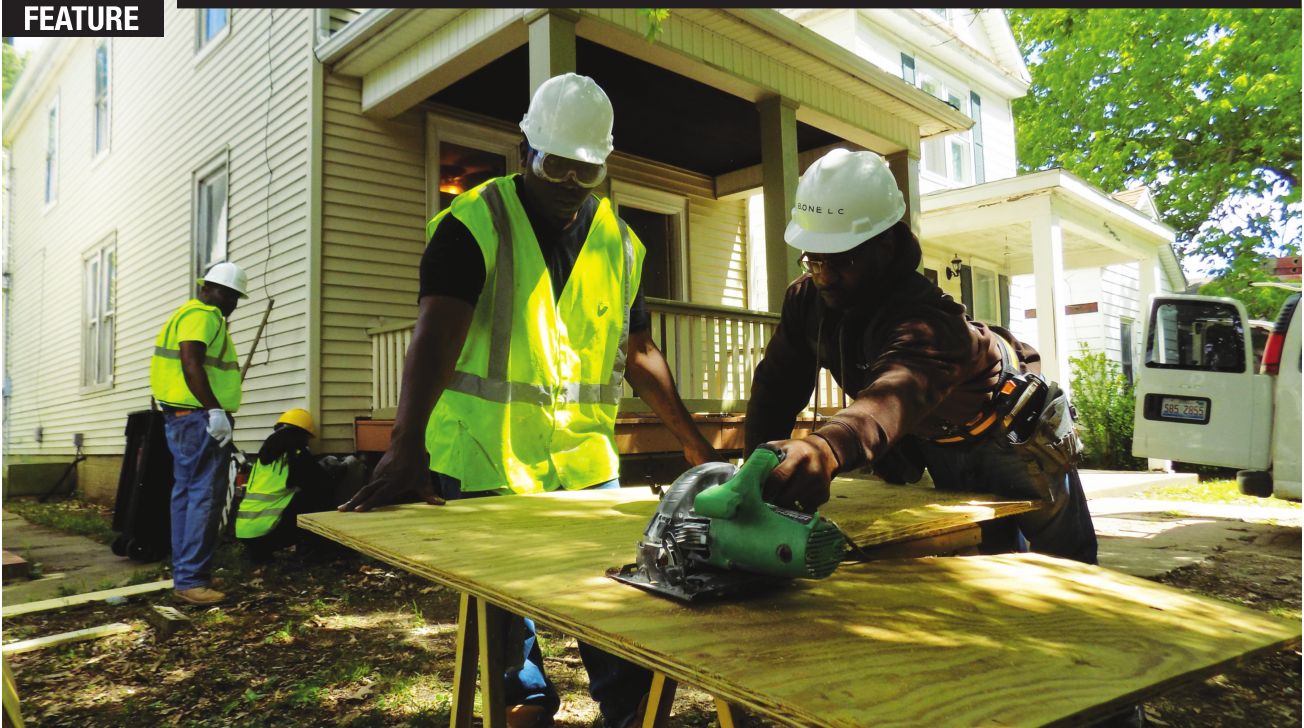
Revitalization efforts evolving
A century after its peak, Enos Park soldiers on, hoping to regain its reputation as one of Springfield’s most desirable neighborhoods.
It has not been easy. Elegant Victorian-style homes are in assorted states of elegance, some restored to magnificence, others waiting for saviors. There are a few blue-tarp specials with peeling paint, questionable roofs and assorted detritus in unkempt yards. There are also empty lots where some of the worst houses, many vacant magnets for transients, once crumbled and were, at last, torn down. The grass, at least, is mowed.
In short, the Enos Park neighborhood, which lies north of downtown between Carpenter Street and North Grand Avenue, remains a work in progress, albeit better than it was three decades ago, when residents concerned about crime and blight and absentee landlords, all of which seemed intertwined, banded together to form the Enos Park Neighborhood Improvement Association aimed at sparking an Enos Park renaissance. “Enos Park Coming Back to its Old Life,” the State Journal-Register declared in a 1991 headline for a story that publicized an upcoming tour of historic homes. The same headline would be appropriate today.
It is not easy to resurrect a deteriorating neighborhood near the center of a Midwestern city with stagnant population growth and a penchant for turning cornfields on the fringes into shiny, happy subdivisions. Enos Park, it can be argued, has more than held its own, commanding the attention of civic leaders through the years who have come up with solutions ranging from tax increment financing to city-funded guarantees against property value declines.
Some ideas have died quiet deaths – former Mayor Karen Hasara’s pitch in the 1990s to create a home equity insurance fund that would have paid house sellers if their homes sold for less than an established value didn’t get far. But Enos Park under Hasara did become the first, and still only, residential neighborhood in Springfield that is a tax increment financing district. The assessed value of property within the district has risen by 20 percent since the TIF district was founded in 1997, according to city records, and more than $5.5 million in added property value, now generated at the rate of approximately $500,000 per year, during the past two decades has been available to improve the neighborhood.
TIF, tax turmoils TIF money has brought both blessings and headaches. Eight months ago, Enos Park was under a cloud as former Sangamon County Circuit Court Judge Roger Holmes, acting as an inspector general, investigated claims of sundry shenanigans involving alleged insider deals and purported misuse of tax increment financing funds, by the Enos Park Neighborhood Improvement Association and its development arm, the Enos Park Development Corporation.
Allegations leveled by a former association member proved either groundless or overblown, according to Holmes, who found that no insiders had benefited and no public money had been misused. In December, he issued a report that was as much an analysis of development strategy as a document aimed at determining whether anything improper had occurred.
In recent years, the neighborhood improvement association has been using TIF money to buy property and establish a socalled land bank. In some cases, crumbling houses have been demolished. In others, the association and its affiliated development corporation sold dilapidated homes for less than market value – $5,000 was a typical price – to folks who renovated the properties and signed contracts agreeing that the homes would be owner occupied and rehabilitated to meet the association’s design standards. While the arrangement helped guarantee aesthetic appeal and guard against absentee landlords, it hasn’t been a financial winner for the association, which has relied on the city to keep TIF money flowing to purchase properties, which would then be sold, with proceeds used to pay property taxes and other ongoing expenses.
The city last fall delayed releasing $153,000 in TIF funding pending Holmes’ investigation, and the neighborhood improvement association and its corporation fell behind on property tax payments for parcels that had no ready
buyers. Taxes on 73 parcels owned by the neighborhood improvement
association and its development corporation were sold last November,
putting the association and its affiliated corporation on the hook for
more than $35,000 in late taxes, interest, penalties and fees. The
neighborhood group and corporation have paid delinquencies on at least
eight parcels but still owe more than $31,000 for 2015 taxes due last
year, including fees and penalties, according to Sangamon County
property records.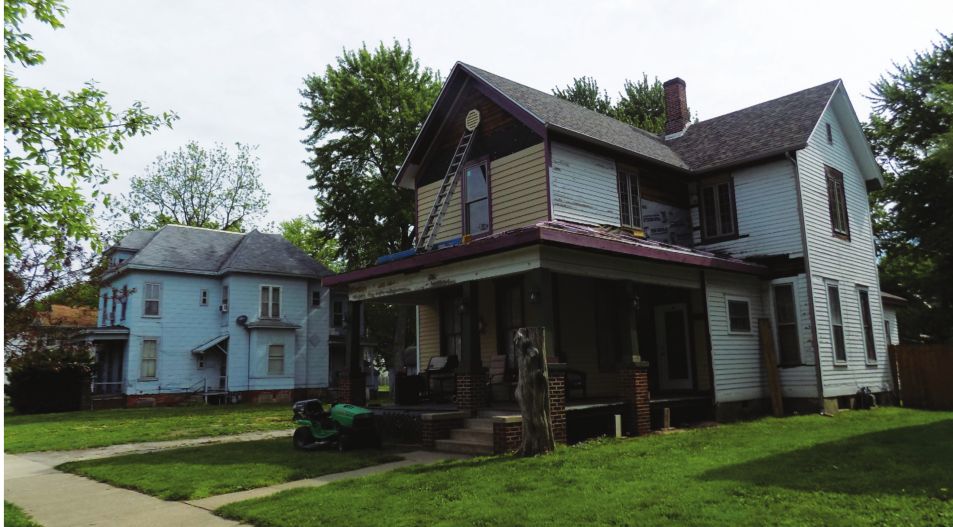
Michelle
Ownbey, president of the Enos Park Neighborhood Improvement
Association, says that she’s hoping to have delinquent taxes, interest,
penalties and fees paid off by the end of the year, in part with money
the association hopes to make by renovating homes purchased with TIF
money. The association has recently formed a partnership of sorts with
Town and Country Bank, which has formed a community development
corporation to finance renovations on homes owned by the association and
its affiliated corporation. The bank, Ownbey says, has agreed to
finance up to three renovations, and more could be coming in the future.
Grant
Franklin, Town and County senior vice president for commercial banking,
said the bank’s community development corporation has committed roughly
$100,000 to renovate two homes, and more money could be coming. It’s
fair to think of it as a pilot project, Franklin said, and the
commitment could help the bank fulfill its obligations under the federal
Community Reinvestment Act, a law that requires federally insured banks
to extend credit fairly in all segments of communities. The law,
however, does not require banks to take on high-risk loans or engage in
unsound banking practices. “It’s a little speculative, because there’s
no one in the houses and no one waiting in the wings to buy them,”
Franklin said. The bank, Franklin says, is interested in the long term,
even if the initial outlay is relatively small.
“This
isn’t just a one off and we’re done,” Franklin said. “We’re interested
in helping them (the neighborhood association) as long as they continue
to like working with us.” Ownbey said three renovations completed with
financing from the bank’s community development corporation could
balance the books for her organization if the houses can be sold at
market rate by year’s end.
“We
do have a plan for digging ourselves out of this hole,” Ownbey said.
“We didn’t get into it quickly, and we’re not going to get out of it
quickly.”
In his
report, Holmes called the association’s stockpile of more than 60 vacant
lots “excessive,” and he predicted that the number of vacant lots owned
by the neighborhood association and its development corporation will
grow as dilapidated houses that can’t be sold are demolished. The city,
Holmes recommended, should avoid paying for more vacant lots, and he
also said that the city shouldn’t release any TIF money until the
property tax delinquencies are paid.
Holmes’
recommendations echoed statements by Mayor Jim Langfelder, who had said
that the neighborhood improvement association and its development
corporation should focus more on building and less on land acquisition.
Langfelder has also suggested that the city establish a land bank so
that property would be under public ownership and not subject to
property taxes. But Ownbey says that the association should not cede
ownership of land, which could mean losing control over what happens to
it.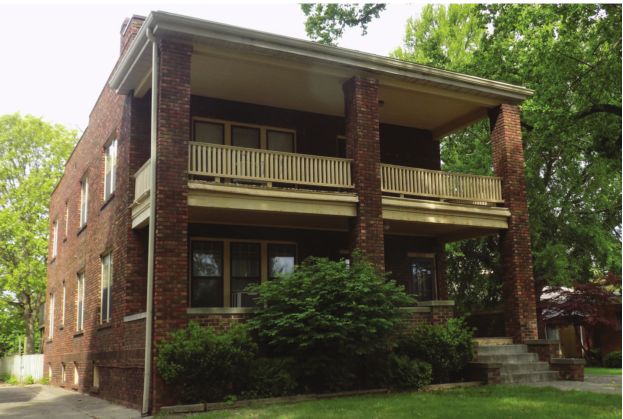
“We see this in a
larger picture than just one administration,” Ownbey said. “This is now
our fourth mayor, under both political parties. … The problem is,
different administrations have different priorities and different
visions. We have a lot invested in this, not to mention that we have to
live with the end result. At the end of the day, we want to be able to
control what’s happening in our own neighborhood.”
“This
was the right neighborhood” Three weeks after Holmes released his
report in December, the city council released $153,000 in TIF funds
earmarked to purchase five homes. At the same time, the council required
the neighborhood association to submit quarterly reports on how TIF
money has been used. The council also required the association to start
submitting reports on progress that’s being made in realizing a master
plan for the area created in 2010. Under the master plan, 459 existing
homes deemed in fair or poor condition are supposed to be revitalized by
2030, and an additional 117 new homes are supposed to be built on
vacant lots, a tall order in a city that hasn’t seen much new
residential development in any existing neighborhoods near the city’s
core in recent years.
It’s
doable, Ownbey says. Seven years into the plan’s 20-year timeline,
Ownbey estimates that between 75 and 100 houses have been renovated,
either by the private sector or with help from the association and its
affiliated corporation, which flips homes for far less than what was
paid with TIF money in exchange for promises by buyers to fix them up
and ensure that they’re owner occupied. As for new construction, Ownbey
says that the plan’s goal is “within the realm of possibility.” The
association, she says, has been in touch with prospective developers,
and dirt could soon be turned.
“The first one is going to be the hardest,” says Ownbey, who is associate publisher of the Springfi eld Businesss Journal, sister publication to Illinois Times. “I think, within the next year, we’ll be breaking ground on the first house.”
Ward
5 Ald. Andrew Proctor, who lives in Enos Park, sees the first house
being built as a tipping point, a sign that the neighborhood can thrive
on its own without public subsidies. “I think it will be a domino
effect, once that first one gets built,” Proctor said. “It feels like
we’re almost there.”
Proctor’s
house is proof that Enos Park has already traveled a good distance in a
short amount of time. He and his wife purchased their home on North
Sixth Street for $130,000 in 2014, just five years after it was
renovated and sold for $109,000. It works out to a 19-percent price
increase over five years, an admirable return on residential real estate
anywhere in the city.
Even
dumps cost more these days in Enos Park, according to Ownbey. Since the
association and its affiliated corporation started buying houses with
TIF money five years ago, prices have shot up, she says, with sellers
asking $35,000 for homes that would have sold for $10,000 or $15,000.
“We sort of created the market for crappy houses,” she quips. For now,
however, the association is on the sidelines as it works to pay off
delinquent taxes – the city, Ownbey figures, isn’t likely to approve TIF
money for more acquisitions until the association and its affiliated
corporation settle tax bills. “It’s frustrating to see some of these
opportunities pass by,” she says.
Proctor
says he had a “gut feeling” that Enos Park was right for his family. He
recalls that he and his wife wanted to live near downtown, so they sent
an email to the neighborhood improvement association. Onwbey replied
within minutes, he says, and before long Fletcher Farrar, owner of Illinois Times and
a longtime denizen of Enos Park, was driving him around the
neighborhood. The house that Proctor purchased had been renovated by
Farrar years earlier. Proctor says he and his wife didn’t look any
further, and they haven’t regretted it. It’s the kind of place where
neighbors watch each other’s kids, loan tools and put out trash bins if
someone is out of town, he says.
“This
was the right neighborhood,” Proctor says. “Everybody in the
neighborhood is willing to help you out with the things you need help
with. Not to knock the west side, but you don’t get that sense of
camaraderie – everyone lives in their own home and lives their own
lives. In Enos Park, it’s like we’re a team, and we have a goal.”
Deals
can be extraordinary for buyers who are handy with hammers. Calvin
Pitts, a contractor, bought his house from the neighborhood association
in 2013 for $5,000. He says he spent $60,000 and plenty of sweat making
it just exactly perfect, and it shows, both inside and out. The
staircase to the second floor, once nothing special, is now a marvel
built from Douglas fir. Siding that faces the street is stained wood
that gives a rustic, outdoorsy feel. The kitchen, once dominated by
linoleum, now has tile, an island and two ovens set into a wall, one
above the other.
“We got a real good deal,” Pitts says.
“They sell them cheap, you can afford to put more money into it.”
Pitts
now is rehabbing a less-glamorous dwelling on North Third Street for
the association, with renovations financed by Town and Country. When
finished, it promises to be the nicest home on the block, but perhaps
not for long, given that a vacant home next door was recently sold by
the association to a buyer who, under terms of the contract, must
conform to design standards and make it an owneroccupied residence. An
attractive purchase price notwithstanding, Pitts says that the
neighborhood improvement association was a factor in his decision to
invest in Enos Park.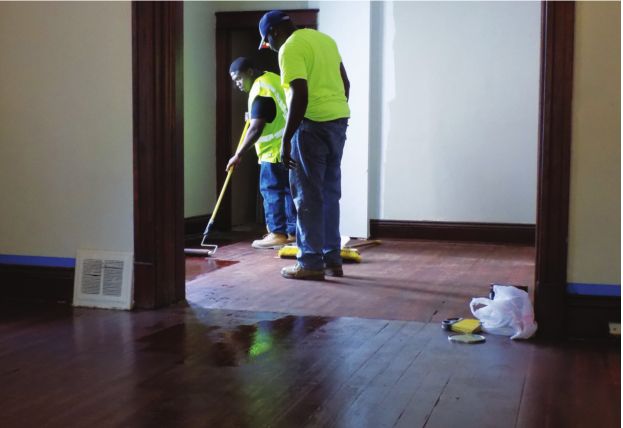
“The
biggest thing for me was the involvement of the neighborhood
association in the community,” Pitts says. “I thought, ‘This will be a
great thing to be part of.’”
The
model that works With the association at least temporarily out of the
acquisition market, Ownbey is worried about houses selling cheap.
“People are constantly contacting us to buy properties, wanting to fix
them up,” Ownbey says. “We don’t have a lot of them at this point. Our
concern is, if the property goes on the market for $20,000 or $40,000,
usually nothing good comes from that. A landlord comes along and slaps
some paint up and calls it a day.”
While
the city is unlikely to allow the association and its affiliated
corporation to stockpile property at previous rates, at least until tax
bills are settled, the Langfelder administration doesn’t appear to be
turning its back on Enos Park. Last month, the city council approved a
measure that would allow homeowners to use TIF money for exterior
improvement projects such as new roofing or porches or siding. Under the
program, the city will provide up to $15,000 on a dollar-for-dollar
match, with $250,000 initially set aside. Proctor credits the mayor.
“This is something I talked to the mayor about awhile back: Please help find a way, and they did,” the alderman says.
Last
month, the council also approved a program that will provide up to
$20,000 in TIF funding for firefighters or police officers to either
build or buy homes in Enos Park. Ownbey, however, says that the money
likely would have to be spent to buy existing homes, given that state
law restricts TIF spending for new construction. While TIF money can be
spent on site acquisition, design work and demolition, she said, the
developer must pay prevailing wage for labor if the money is used for
actual construction, which wouldn’t pencil out in Enos Park. Still, the
program could prove an attractive carrot, considering firefighters and
cops who use TIF money to buy homes could also use as much as $15,000 in
TIF funds for exterior improvements under the city’s dollar-for-dollar
matching program also approved in April.
Coupled
with Town and Country financing rehabs for homes owned by the
neighborhood association and its affiliated corporation, the programs
approved in April form the third leg of an essential
publicprivate-nonprofit stool, says Karen Davis, city economic
development director.
“That’s exactly the right way to think about it,” Davis says. “This is, exactly, the model that works.”
Neighborhoods
don’t exist on houses alone, and so Langfelder has also proposed
spending $55,000 in TIF money to help Jerome Taylor buy a vacant
restaurant at 716 E. Enos Ave., former home to Susie Q’s, which closed
last year. The purchase price is $110,000. Taylor now operates MJ’s on
South Grand Avenue from a wooden enclosure not much bigger than a
bathroom, with to-go the only option. The city council is expected to
consider the measure this month.
“It
just seemed like a perfect fit for the neighborhood,” Davis says. “He’s
already got a following of folks. The spirit of TIF is to create
economic opportunities. It certainly meets the letter and spirit of what
TIF is all about.”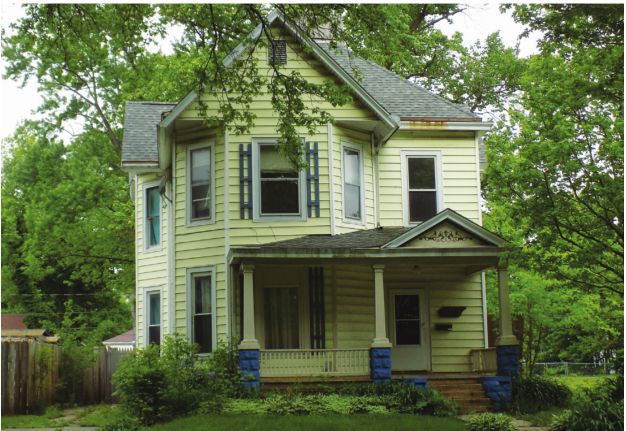
There
is also art. A brick duplex on North Fifth Street adjacent to the
Springfield Art Association will soon be home to two artists who will
come to Enos Park for inspiration. They are expected to arrive within a
month and stay through the end of June as part of an artist in residency
program that the association hopes will continue for years to come.
While TIF money isn’t directly involved, the duplex that will be the
artists’ home was purchased with TIF money.
“I’m
pretty excited about it,” says James Pepper Kelly, who is working on a
master’s degree at the Chicago Institute of Art and has never been to
Enos Park. “It seems that people in Enos Park are concerned with their
own history in a way a lot of other places aren’t.”
The
exact work of art that Kelly plans to create is somewhat mysterious. He
talks about “cross community dialogue” and “socially engaged art,” but
beyond that, he won’t be pinned down. “I just don’t want to say anything
definitive,” he says. He does say that he plans to spend a lot of time
reading old newspapers and talking to civic leaders as well as just
plain folks in Enos Park itself, the patch of green at the
neighborhood’s center.
“If
you want to make work about people and about the social conditions of
our immediate present, then you have to live among the people,” he says.
Kelly
is coming with the promise of nothing more than a place to sleep and
access to the Springfield Art Association if he needs art supplies or
computer time. Astrid Kaemmerling, who is based in San Francisco, is
getting a spot in the duplex plus a $1,000 stipend from donations given
to a University of Illinois Springfield visual arts fund. She is
expected to talk to residents and present a show that is somewhat akin
to an oral history. Allison Lacher, manager at the UIS Visual Arts
Gallery, said that the fledgling Enos Park artist in residency program
received 20 applications from across the nation and overseas. Applicants
ranged from artists who wanted to paint to an artist who wanted to
build a playground, she said.
At
first, the program was supposed to be limited to just one artist who
would get a stipend. “When we saw how strong all the candidates were, we
started asking around to see if we could find someone to fund a second
stipend for a second artist,” recalls Betsy Dollar, executive director
of the arts association. Money wasn’t forthcoming on short notice,
Dollar says, and so the association told Kelly that he’d lost out. “We
told him that there wasn’t money and he said, ‘Fine – can I come
anyway?’” Dollar says.
And so Enos Park, it seems, really is a magnet.
Contact Bruce Rushton at [email protected].